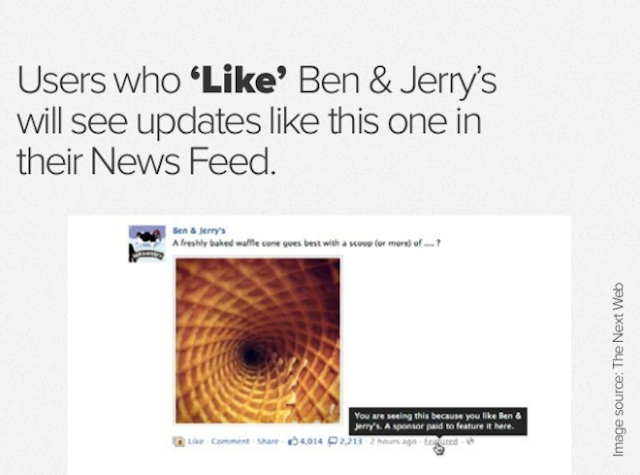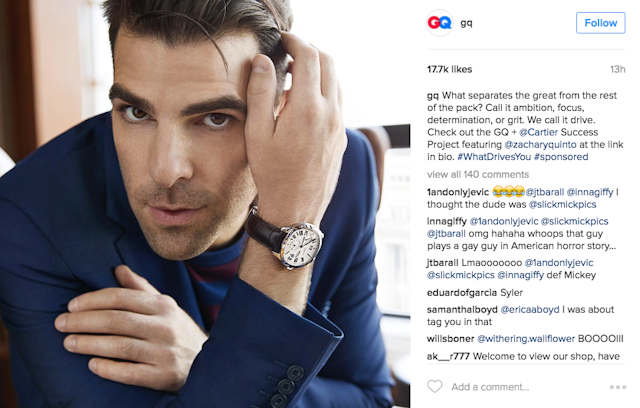Influence through the ages: a history of sponsored content
If we’re going to have an honest talk about the #sponsored hashtag, we need to get this out of the way first: advertising sucks. Today’s consumer is connected, educated and hates being on the receiving end of a hard sell. They’ll buy your product when they decide they need it, not because your billboard told them to.

As marketers, that means we’ve had to become inventive (and more authentic) about how we talk to our target market about our products; one of the most successful marketing techniques is to get someone your market knows and trusts to do the talking.
Brand endorsements fit for a king
It is understood that the first time a brand used an endorsement to market their products was in 1760, when Wedgewood used their royal warrant to sell their fancy dinner plates. We doubt the Royal Family was benefiting financially from the arrangement (trade exchange, maybe?), but these were the early days of influencer marketing; back then, you didn’t get more influential than the king!
Fast-forward to the 1920s, and baseball players and starlets were the new royalty, lending their image to all manner of advertising. However, it was only in the 1960s, when the family TV became part of the furniture and the mad men of advertising were churning out jingles, that we began to see (what we now recognise today as) influencer marketing in earnest. The Advertising Standards Authority was also established during this period.
Television presenters, suave and likeable, were the new trusted household names – they promoted everything from cigarettes to washing powder on air.
Did they lead in with a token disclaimer: “And now for a word from our sponsors?” Yes, yes they did (brands wanted their names shouted from the rooftops back then) – but that disclaimer wasn’t required by law.
Digital blurs the lines
When you’re having a conversation about sponsored content, what you’re actually describing is disclosure.
From the 1960s to the 1990s, viewers could easily tell the difference between regular programming and an advert. The same went for other forms of popular advertising: magazine spreads, radio, and billboards. Celebrity endorsements were huge, featuring supermodels, sports stars and Hollywood A-listers.
Yet, at the turn of the century, as eyeballs shifted from the big screens to little screens, consumers could plug into the Internet and do comparative shopping online. Everything changed. Purchasing power shifted to the consumer; thanks to digital video recorders (DVRs) like TiVo and plus boxes that came on the market in the early 2000s, consumers also had the power to push the ‘skip’ button during ad breaks.
Marketers had to become subtler in their approach.
Facebook sets the standard for online advertising
Did you know that the first sponsored posts on Facebook didn’t come with the “sponsored” tag?
Facebook began making money from advertising almost immediately since its inception in 2004. These were mostly text-based ads that appeared in the sidebar and were offered on a CPC basis. In 2008, Facebook opened the Pages feature for brands, and in 2009, brands could set up and run their own ads on the platform. By 2011, content from brand pages began appearing in users’ newsfeed. It looked like this:

The fine print reads: “You are seeing this because you like Brand [XYZ]. A sponsor paid to feature it here.” It was only a year later that Facebook ads in newsfeeds were clearly marked as “sponsored”.
Meanwhile, Twitter was already testing promoted tweets in its users’ timelines by November 2010; in early 2013, Associated Press allowed Samsung to post sponsored tweets to its feed, bypassing Twitter’s advertising model.
In November 2013, Instagram ran its first paid post - a Michael Kors advert that popped up in users’ feeds. It was clearly marked “sponsored”, and despite the backlash from users, the Michael Kors IG account gained 34,000 new followers within 18 hours.
Influencer marketing, the final frontier
2013 really was the year when it all came to a head. Ad-blocking was on the rise, and bodies like the FTC released game-changing guidelines along the lines of: “.com Disclosures: How to make effective disclosure in digital advertising”.
It was also the year that the term “influencer” went mainstream, as more and more marketers recognised the opportunities that these social media stars and their loyal followings offered to brands.
Of course, with great power, comes great responsibility. As influencers became publishers of content (and sponsored content) in their own right, the same rules of disclosure that apply to advertisers applied to influencers and influencer marketers.
The FTC made it compulsory to state upfront where content was paid for, using visible labels like “Sponsored post” in blog posts, the #sponsored and #ad hashtags in social posts, and stating brand endorsements upfront in YouTube videos.

The UK’s Competition and Markets Authority (CMA) released a number of resources for businesses and brands around online reviews and endorsements in 2016, and began prosecuting agencies, marketers and influencers who flout these rules.
All digital channels and social platforms have evolved in their approach to sponsored content and disclosure, and so has influencer marketing.
Samantha Wright is business development manager at global influencer marketing platform Webfluential.
Content by The Drum Network member:

Webfluential
Webfluential is a global Influencer Marketing platform which provides the smartest marketing technology for brands to connect to social influencers. The platform...
Find out more